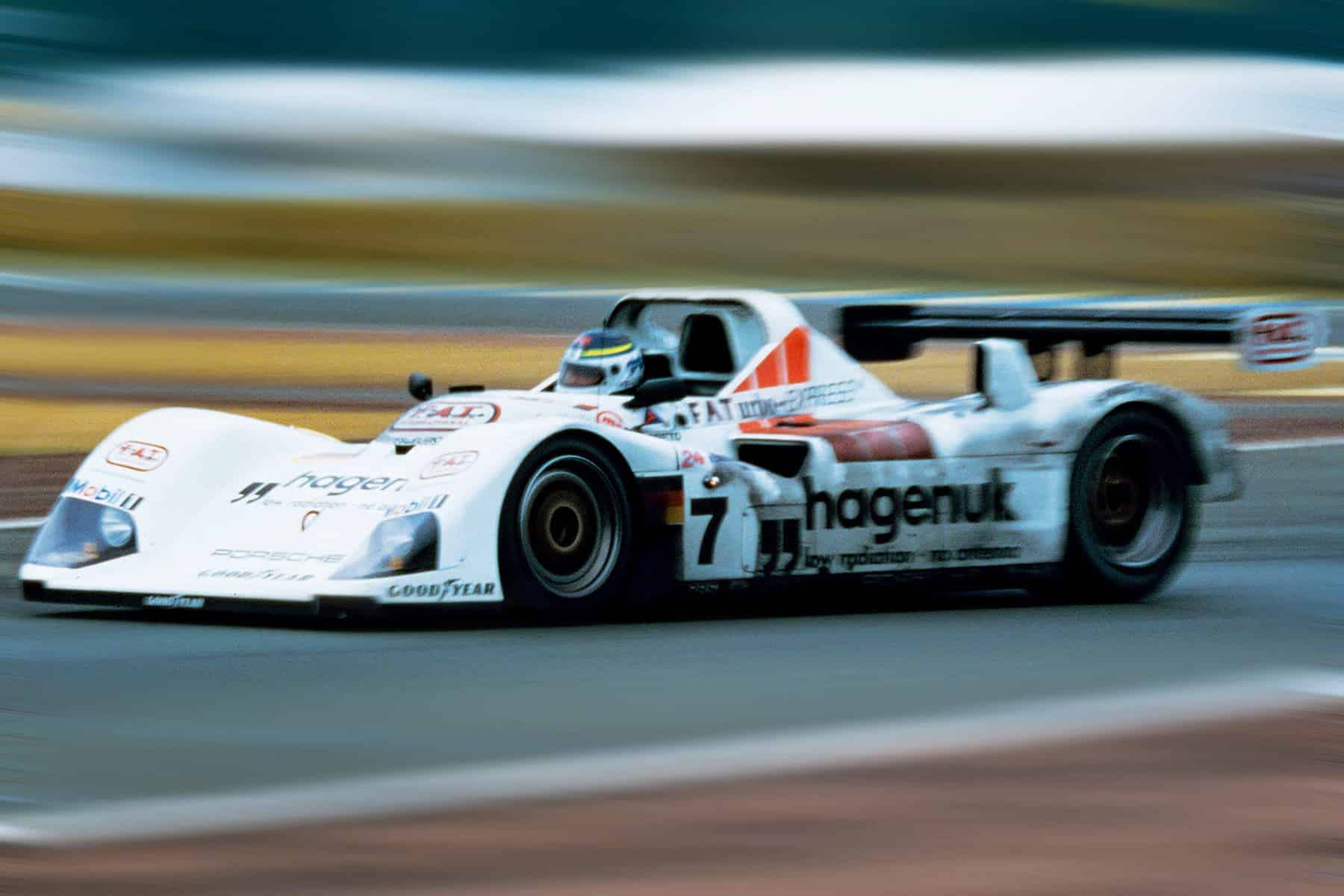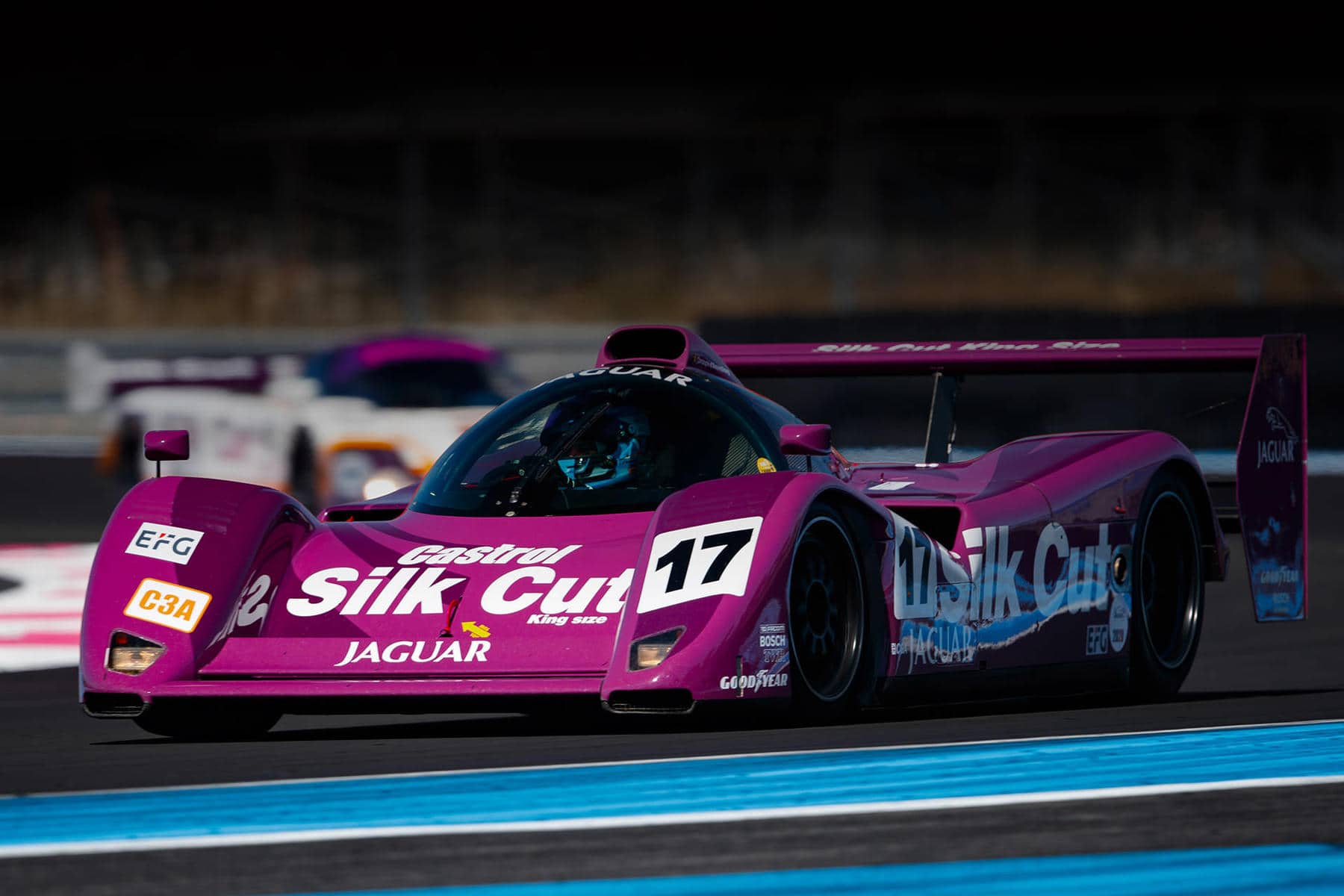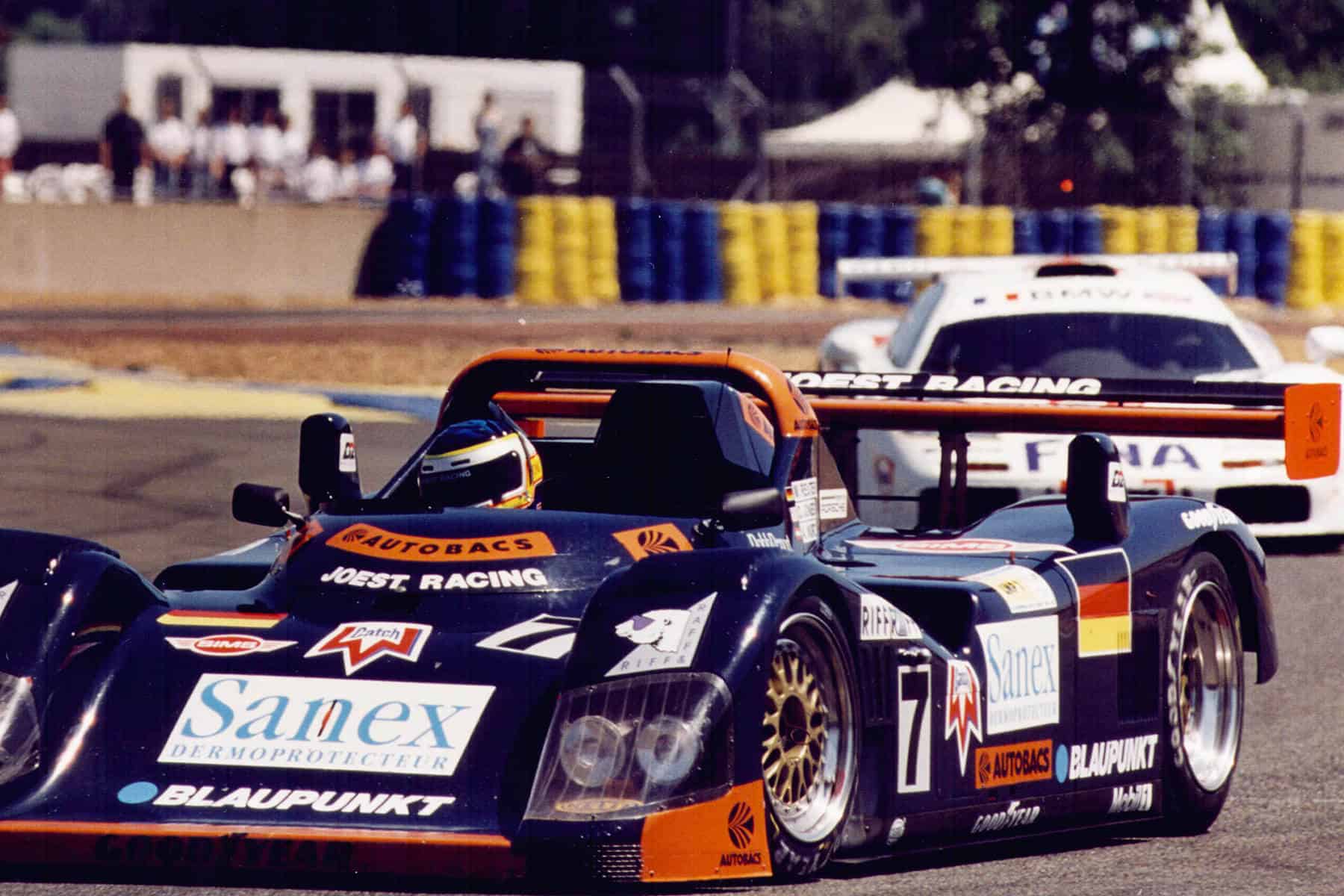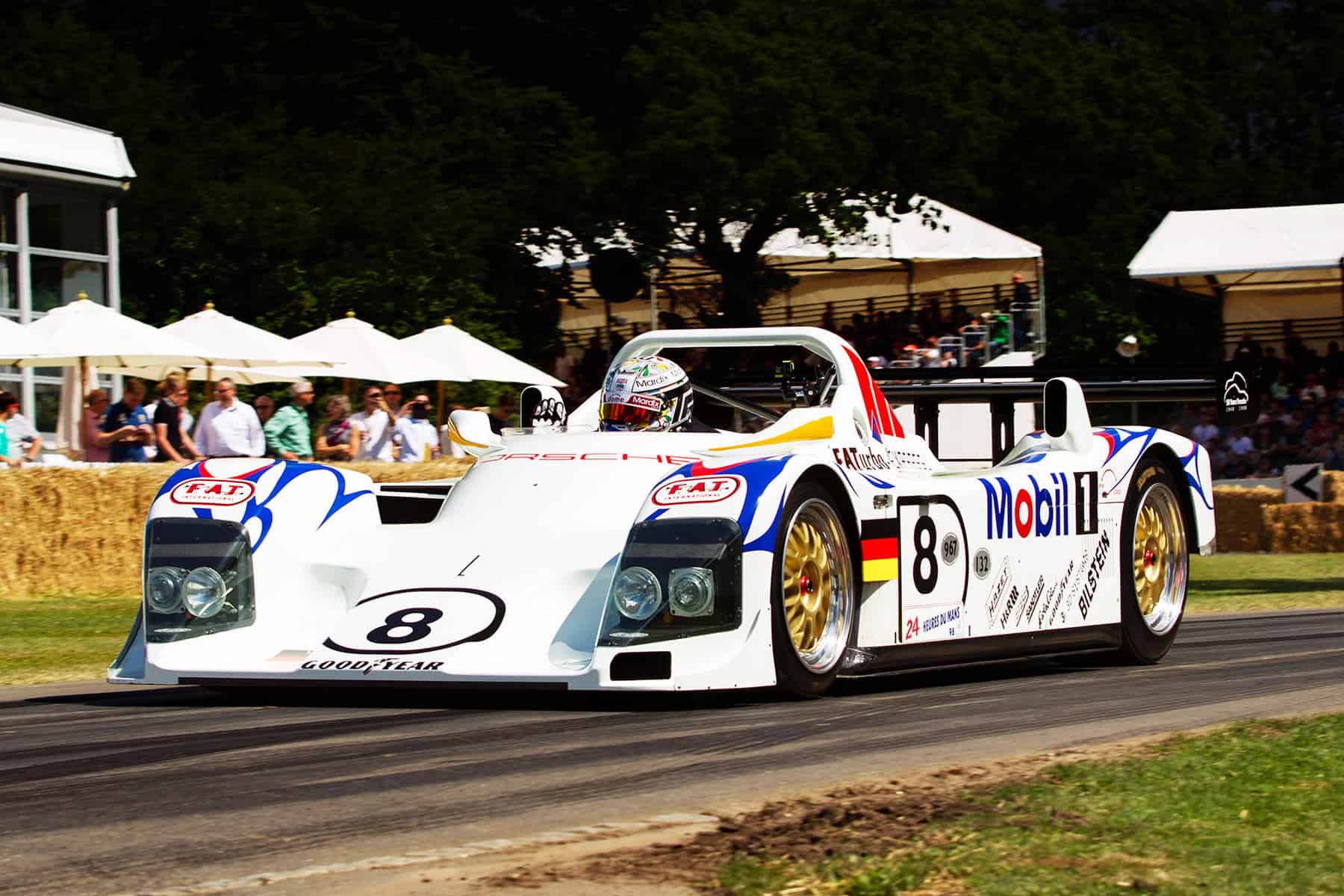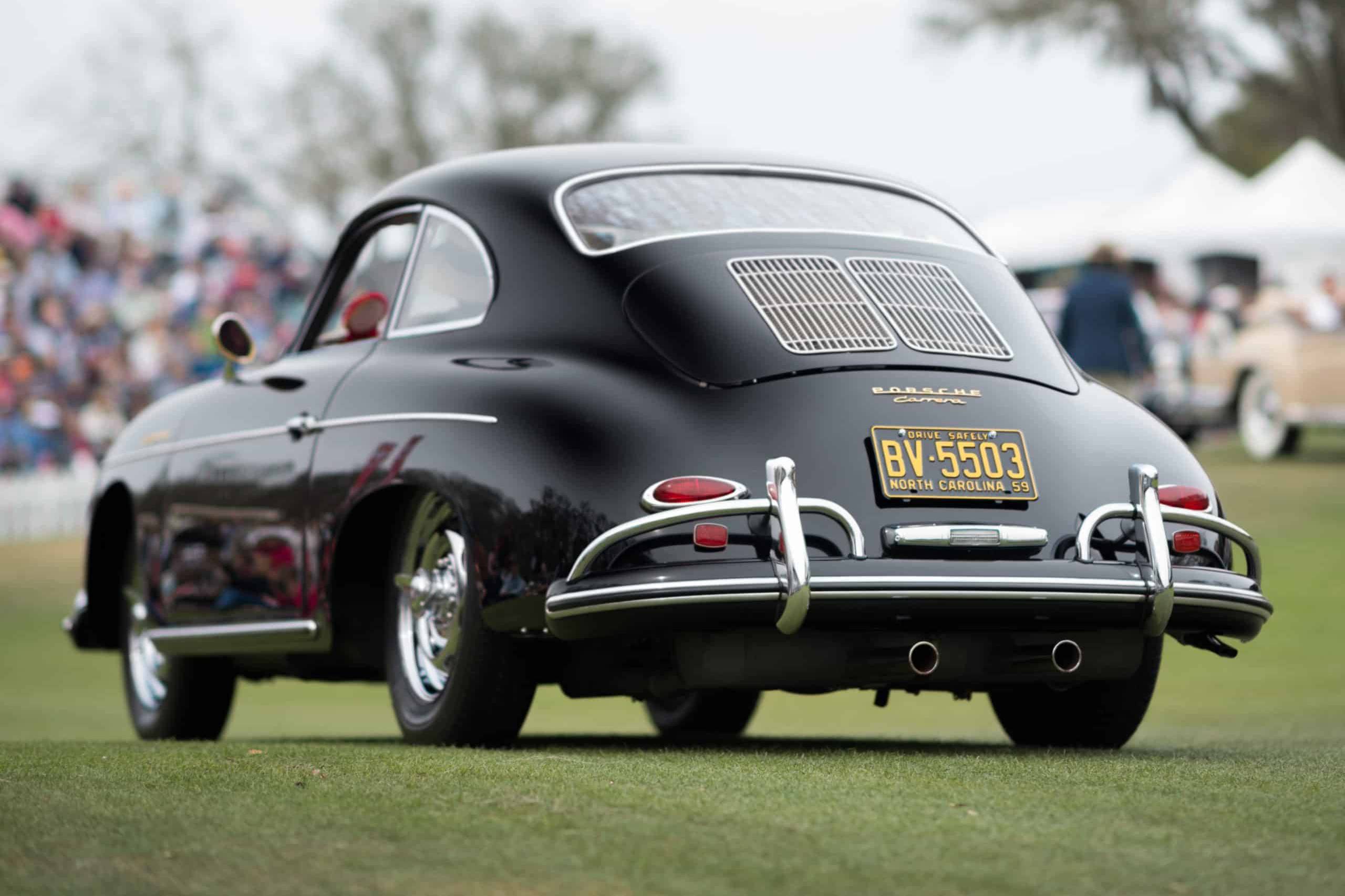Porsche TWR WSC95
The inside story of a champion racer
BY: WOUTER MELISSEN
A quick look at the racing record book reveals that Porsches have won the 24 Hours of Le Mans outright a grand total of nineteen times, with a small asterisk behind two of those victories, as the wins in 1996 and 1997 were achieved by a car that was not built in Weissach, Germany, but rather in Valparaiso, Indiana.
Maybe a second asterisk is also warranted, as the basic design of the Porsche TWR WSC95 can be directly traced back to the Jaguar XJR-14 Group C car of 1991. The explanation is simple – both cars were produced by Tom Walkinshaw Racing (TWR) of Kidlington, England, which had its American base in Valparaiso.
Designed by Rory Byrne and John Piper, the XJR-14 had been developed for the 1991 World Sports Car Championship. It was built to the second-generation Group C regulations, which shared engine regulations with the contemporary Formula 1 rulebook. This effectively made the XJR-14 a Formula 1 car with fenders, a roof, and just about enough space to seat two. Achingly fast, the XJR-14 duly won the 1991 World Championship. For the following year, the cars were shipped to Valparaiso for a campaign in the IMSA Sports Car Championship. The XJR-14 won several rounds in the highly competitive series. After the 1993 Daytona 24 Hours, Jaguar pulled the plug on the North American effort as well, leaving TWR’s American arm without a customer.
One of the reasons for Jaguar’s withdrawal from sports-car racing was the demise of Group C, which was ultimately followed by the IMSA GTP class. Porsche was much in the same boat with its all-conquering 962 left obsolete on both sides of the Atlantic. By somehow convincing the governing body that a mildly modified 962 was in fact a production road car, the machine’s career was stretched to score one more Le Mans win in 1994, but that was it. Now eligible for both the major American races and Le Mans was an open sports prototype that was known as a World Sports Car or WSC. Porsche did not have the resources available at the time to design a new car from scratch and decided to sit out Le Mans in 1995.
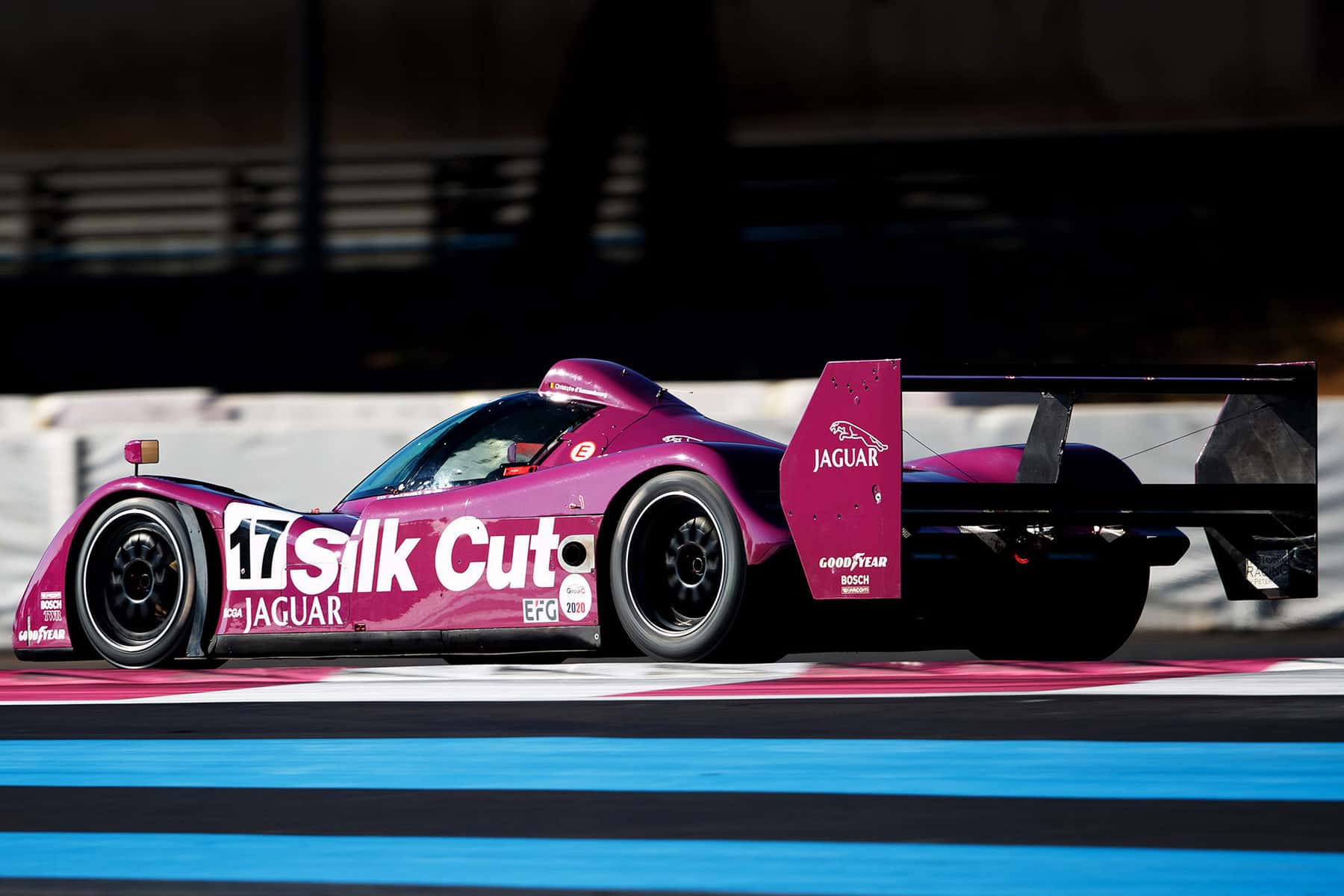
While Tom Walkinshaw was very busy in Europe, running touring cars for Volvo in the British Touring Car Championship and also managing the Ligier Formula 1 team, the Valparaiso facility sat idly by. In 1994, he tasked his team manager Tony Dowe to find a solution: “After a stint as team manager at Ligier I returned to the TWR USA base where Tom gave me six weeks to find a program or shut the place down.” It was by no means an easy task, as all the existing designs had been rendered obsolete by the rule changes. Dowe continues: “Looking at the assets we had, there was an XJR-14 chassis and that was about it. The IMSA WSC rules ruled out using the TWR/Cosworth motor, so I looked around as to what we might fit to the XJR-14 for the new rules.”
In his quest for a new partner, Dowe turned to a rival of old: “Clearly Porsche always had good motors and always seemed to be looked after by IMSA when it came to keeping them involved. I called Alwin Springer of Porsche North America and asked if he had a mock-up motor I could borrow for a new project we were doing. I had to explain what it was and while I think he was a bit unsure, he agreed to send me a motor for fitting purposes. I had to show him some pictures as to how far we had got with the project, they were a bit blurred and also quite far away from the actual parts!” Springer was clearly interested: “After the motor arrived and we offered it to the chassis, it was obvious that it might work. The next step was that Alwin was at Elkhart Lake for some event with then-Porsche Motor Sport manager, Max Welti. So they came to the factory and had a look at what we had done.”
What Dowe had proposed to Springer and Welti was combining the existing XJR-14 design with a Porsche 962C engine to create a new car eligible for the WSC class. As the carbon-fiber monocoque of the XJR-14 was effectively a bathtub, it was easier than it might seem to convert the Coupe Jaguar to a Spyder Porsche. By using existing parts, a lot of time and money could be saved. Dowe recalls: “The car was all XJR-14 from the bulkhead forward, tub, suspension, layout in general. There were changes because it had to be an open-cockpit car.” By using the Porsche 962C engine, the drivetrain was also a relatively well-known quantity.
The rear end was a mix of Porsche components and that of the XJR-14. A bespoke gearbox casing was required, as Dowe recalls: “The Porsche gearbox was designed by Ian Reed in Valparaiso, using Porsche internals. It used XJR-14 rear suspension and was designed to have the oil tank in the bell-housing. Porsche wanted a separate oil tank, so as they were the engine supplier we gave them what they wanted.” Walkinshaw clearly had a favorite deadline for Dowe: “From the day Tom Walkinshaw gave me permission to make the gearbox until the first unit was fitted on the car was six weeks! Awesome effort by all concerned, I don’t think Ian Reed had much sleep designing that.”
Not surprisingly, once the installation of the engine had been sorted, most of the work focused on the bodywork. It was not quite as straightforward as attacking the A-pillars with a saw. Taking the roof off was one thing but the aerodynamics regulations were also profoundly different between Group C / GTP and WSC. Key to XJR-14 design were large underbody tunnels running on either side of the engine to create downforce through what is known as ground effect. By shaping the tunnels like the top surface of an airplane’s wing, a low-pressure area was created underneath the car, effectively sucking it to the ground. All the other aerodynamic devices fitted, like the rear wing, served mainly to trim the car rather than generate additional downforce. The WSC regulations, however, stipulated a flat bottom in order to reign in the massive downforce figures achieved in the final years of Group C and GTP. As a result, the new TWR Porsche was an altogether more straightforward machine from an aerodynamics perspective. While the body was all new, subtle details, like the front fenders, were reminiscent of the XJR-14.
With the help of several Porsche engineers dispatched from Weissach, the first car was ready in time for a shakedown just ahead of Christmas 1994 at Charlotte. Drivers Scott Goodyear and Thierry Boutsen discovered some issues, which had to be addressed before the TWR WSC95 could make its public debut at the official test for the Daytona 24 Hours early in January of 1995. By this time, two cars had been completed and they both were entered by Porsche. This test served as much to fine-tune the cars as it did for the governing body to assess the performance. A level playing field was deemed crucial, so if a car did too well in the test, further adjustments could be made ahead of the race. Porsche’s twin-turbo, six-cylinder engine was always under close scrutiny, as — depending on the boost level used — it could produce a lot of power.
Dowe was keen not to show his hand: “We had a very simple solution to the checking that IMSA did during the Daytona testing. We just set the throttle pedal stop at three-quarters open. All the data that IMSA looked at always showed that the driver was always using 100 percent throttle, they never thought to look if that was in fact 100 percent throttle opening. As the Ferraris went faster we just opened the stop a turn at a time. It was not cheating not to use full throttle, but there was no gain to show what a good car we had built.”
The two TWR Porsches duly set the fifth- and sixth-fastest times with the quickest of the Ferrari 333 SPs clocking times just over two seconds ahead. Porsche signed an all-star crew to man the two cars, which included the likes of Mario Andretti, Thierry Boutsen, and Hans-Joachim Stuck. The IMSA officials were clearly wary of the performance of the two machines and suspected, rightly as it turned out, that the team had been sand-bagging during the test. They decided to further muzzle the engines and raise the minimum weight by 100 pounds for the race. Back at Weissach, these numbers were crunched and the engineers figured that these changes would add a full four seconds to the lap time. That left the cars with little chance of victory and they were withdrawn from Daytona and also from the Sebring 12 Hours.
The two cars were then shipped to Europe with an eye on potentially running at Le Mans. It was not to be and the cars were placed in a corner of the Weissach factory. For the 1996 season, Porsche focused its works-racing effort on an all-new, 911-based GT1 racer. Effectively a purpose racer as well, it combined the front half of 911 with a mid-engine rear end. In a very fortunate twist of fate, the two WSC machines had been noticed by long-time Porsche privateer Reinhold Joest. He had also sat out Le Mans in 1995, and figured running the as-yet unraced machines would be his ticket back into the race for 1996. Joest was lent the two cars to defend Porsche’s honor. As part of the agreement, Porsche promised that he could keep a car for his collection if it actually won the race.
Ahead of the race, Porsche gave Joest Racing some time in the wind tunnel to properly prepare the cars. Both WSC95s were entered, once again manned by a very strong crew. This included Davy Jones, who had previously raced the car as an XJR-14 back in the 1992 IMSA GTP Championship. Meticulously prepared to the legendary Joest Racing standard, the cars were blisteringly quick at what was their official and much-delayed racing debut. The No. 8 car started from pole position, but it was the No. 7 shared by Jones, Alexander Wurz, and Manuel Reuter that came through to take the victory. As it turned out, the car was not only fast, it was also very reliable; the No. 7 TWR Porsche spent a full three minutes less in the pits than any other car that finished the race. For Joest Racing, it was the third overall win at Le Mans, and the winning car made for quite the trophy!
This was the sole appearance of the car that year, but for 1997, Joest Racing was back at Le Mans with what was now his TWR WSC95. Entrusted to Michele Alboreto, Stefan Johansson, and Tom Kristensen, it started the race from pole position. Where the Porsche works efforts faltered, the 1996 winner soldiered on to become only the fourth car in Le Mans history to take back-to-back victories. Interestingly, one of the other cars on the grid that year was the Nissan R390, which was the latest TWR creation. Later in the year, Joest Racing brought the car back out for a sports-car race at Donington. Johansson shared with Pierluigi Martini to make it three wins in three outings after starting from second.
In 1998, Porsche marked the company’s fiftieth anniversary, and the most suitable celebration would be an outright win at Le Mans. For the occasion, a completely new version of the GT1 car had been created, but little was left to chance, so both WSC cars were entered as well. Comprehensively updated with new bodywork, the cars were now known as the Porsche LMP1/98. Neither played a leading role in the race, which, fortunately, was won by one of the Porsche GT1 cars. Joest Racing’s car was then raced once more, finishing second at the Petit Le Mans race in October of 1998. Still owned by Joest Racing, the two-time Le Mans–winning chassis has since been restored back to the colors and configuration used in 1997.
At the time, it was well known that TWR had been responsible for the development of the WSC95, but just how closely it had been related to the XJR-14 was not. As it later turned out, the very first car was built on a chassis that had already been used as an XJR-14. In this guise, it had won both races in the 1991 World Championship and the 1992 IMSA GTP Championship. Whether Porsche was aware of this, Dowe does not know: “We never made a secret of it, but as it was a composite structure with no damage, it was in as-new condition, which included suspension.” It was certainly in great condition as this chassis (No. 691) would go on to score two outright Le Mans victories in its second guise.
